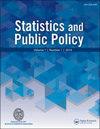Expected Labor Force Activity and Retirement Behavior by Age, Gender, and Labor Force History
IF 1.5
Q2 SOCIAL SCIENCES, MATHEMATICAL METHODS
引用次数: 2
Abstract
ABSTRACT We find and estimate probability mass functions for labor force related random variables. Complete life expectancy (by age, gender, and two years of labor force history) is decomposed into expected years of future labor force activity and inactivity as well as into expected years until final separation from the labor force and expected years in retirement. We also calculate expected age at retirement and expected years in retirement for people who actually retire. Two consecutive years of inactivity, especially in middle age, is a key indicator for both men and women when accounting for future labor force participation and retirement. For example, women (men) who are out of the labor force at age 49 and again out of the labor force at age 50, can expect to be in the labor force seven (eight) fewer years in the future than their counterparts who were in the labor force at ages 49 and 50. In addition, they have expected retirement ages 4.5–5.5 years younger than their active counterparts.按年龄、性别和劳动力历史划分的预期劳动力活动和退休行为
摘要我们发现并估计了劳动力相关随机变量的概率质量函数。完整的预期寿命(按年龄、性别和两年的劳动力历史)被分解为未来劳动力活动和不活动的预期年数,以及最终脱离劳动力的预期年和预期退休年数。我们还计算了实际退休人员的预期退休年龄和预期退休年限。在考虑未来劳动力参与和退休时,连续两年不活动,尤其是在中年,是男性和女性的一个关键指标。例如,49岁时退出劳动力市场,50岁时再次退出劳动力市场的女性(男性),预计未来加入劳动力市场的时间将比49岁和50岁时的同行少七(8)年。此外,他们预计退休年龄比现役同龄人年轻4.5至5.5岁。
本文章由计算机程序翻译,如有差异,请以英文原文为准。
求助全文
约1分钟内获得全文
求助全文
来源期刊

Statistics and Public Policy
SOCIAL SCIENCES, MATHEMATICAL METHODS-
CiteScore
3.20
自引率
6.20%
发文量
13
审稿时长
32 weeks
 求助内容:
求助内容: 应助结果提醒方式:
应助结果提醒方式:


